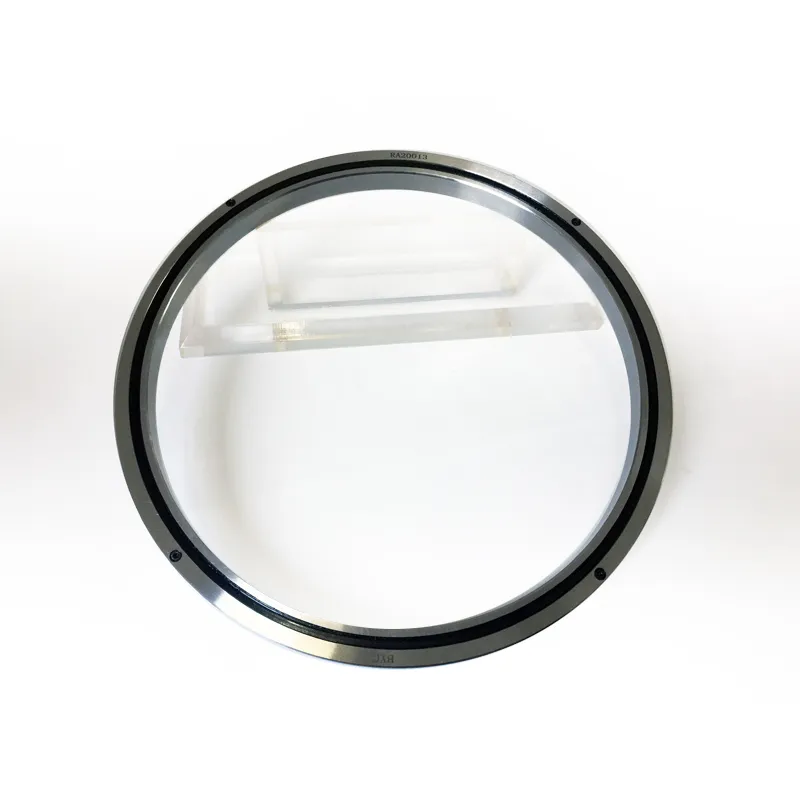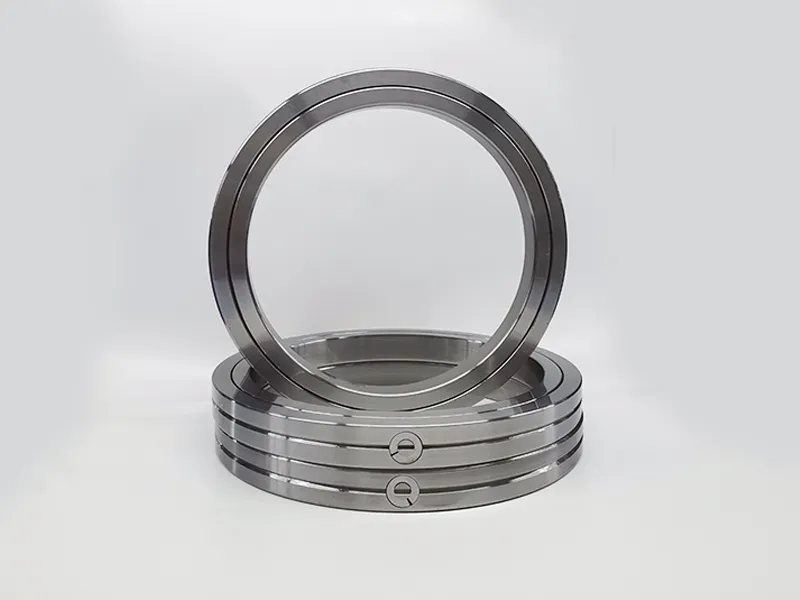Crossed roller bearings are a type of high-precision bearing with a unique structure that allows them to support radial, axial, and moment loads simultaneously. Their structure and design offer high rigidity and compact size, making them suitable for applications requiring high accuracy and stiffness, such as robotics, machine tools, and medical equipment.
Structure of Crossed Roller Bearings

Inner and Outer Rings:
Inner Ring: Often split into two pieces to facilitate the insertion of the rollers and retainers.
Outer Ring: Can be one piece or split, depending on the design. The outer ring typically has a groove to house the rollers and retainers.
Rollers:
Cylindrical rollers are positioned between the inner and outer rings.
Rollers are arranged at right angles (90 degrees) to each other in an alternating pattern, which allows the bearing to handle loads from multiple directions.
Separator/Retainer:
A retainer or separator is used to keep the rollers in their correct positions and to prevent them from contacting each other.
The retainer can be made of materials like metal or plastic, ensuring smooth rotation and reduced friction.
Raceways:
Both the inner and outer rings have precisely machined raceways that match the rollers’ profiles.
The raceways ensure the rollers are guided accurately, distributing the loads evenly across the rollers.
Features and Benefits

High Load Capacity:
The crossed arrangement of rollers allows the bearing to support loads in all directions (radial, axial, and moment) with high capacity.
High Rigidity and Precision:
The compact design and precise manufacturing of the raceways and rollers provide high rigidity and accuracy, which is crucial for precision applications.
…
More detailed information about the structure of crossed roller bearings can be found at: https://www.boyingbearing.com/en/a/news/crossed-roller-bearing-structure.html


